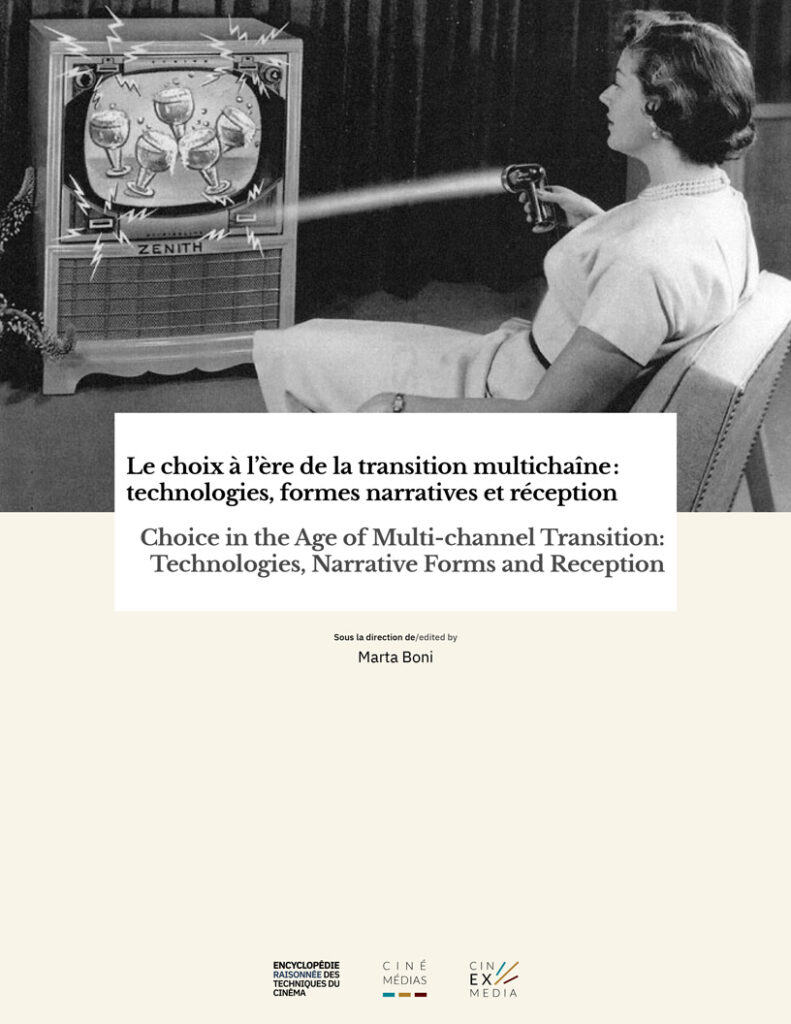Guest-edited by Marta Boni
This book focuses on the discourses around the choice provided to cinema and television audiences by means of a study of the devices which made possible the emergence of practices of selection, recording, asynchronous viewing, archiving and collection, and through these greater control over and personalization of the viewing experience. We will first present an overview of North American television in the 1980s and 90s, which mark the end of an age when television was conceived as a flow, tied to a logic of broadcasting. We will then describe the arrival of two technological innovations, the videotape recorder and the remote control, linking those changes to the cultural and narrative transformations of the television series in that era. This will lead us to a presentation of the series Northern Exposure (CBS, 1990-95), an example of “complex” television.
Table of contents
- Introduction (Marta Boni)
- Overview (Marta Boni)
- Equipment Analysis: The Videotape Recorder (Marta Boni)
- Equipment Analysis: The Remote Control (Joyce Cimper)
- Discourses on Series (Marta Boni)
- The Case of the Series Northern Exposure (Marta Boni)



